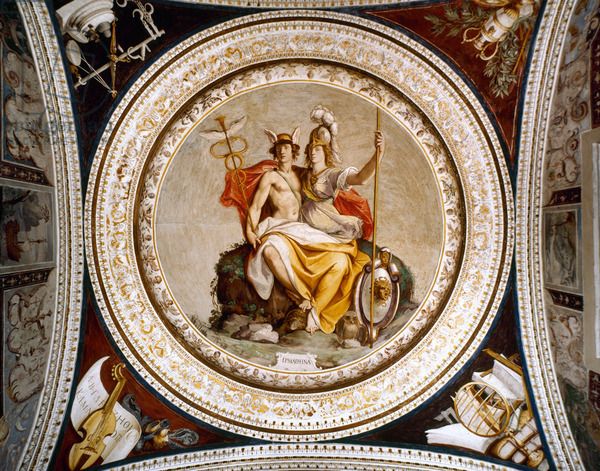Hermathena, Hermes and Athena by Federico Zuccari 1566-1569
"Herm-Athena, a statue representing Mercury and Minerva, (called by the Greeks Athene) in one figure. Pomponius Atticus having found one of these rare statues at Athens, writes to his friend Cicero, that he would send it him to adorn his library. It was natural to see Mercury and Minerva joined in the same statue, the one deity presiding over eloquence, the other over arts and sciences. On the reverse of a medal of the emperor Adrian, who piqued himself upon his learning and eloquence, is an Herm-Athena."
-John Bell (1745-1831): Bell's New pantheon, or, Historical dictionary of the Gods, demi-gods, heroes, and fabulous personages of antiquity; page 394 (405/419)

Hermathena, Hermes and Athena by Federico Zuccari 1566-1569. Location: The Villa Farnese, also known as Villa Caprarola.

 |
| Detail. |
 |
| Detail. |
 |
| B&W version. |
Source:
https://commons.wikimedia.org/wiki/File:Villa_Caprarola_Gabinete_de_Ermatena.jpg
https://commons.wikimedia.org/wiki/File:Cabinet_of_the_Ermatena_(union_between_Ermes_and_Atena).jpg
http://catalogo.fondazionezeri.unibo.it/scheda/opera/32299/Zuccari%20Federico%2C%20Ermes%20e%20Atena
https://br.pinterest.com/pin/531002612313454289/
Quote:
https://archive.org/details/bellsnewpantheo00bellgoog/page/n404/mode/2up


Comments
Post a Comment